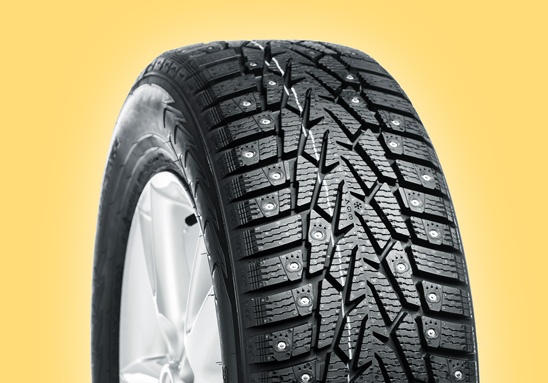Understanding the Importance and Functionality of Oil Lip Seals in Machinery
Understanding Oil Lip Seals Essential Components for Machinery
Oil lip seals, commonly referred to as lip seals or rotary shaft seals, are critical components in various machinery and equipment, playing a vital role in ensuring efficient operation and longevity. These seals are specifically designed to prevent the leakage of lubricants and the ingress of contaminants, making them essential for maintaining the integrity of mechanical systems. This article delves into the anatomy, types, applications, and maintenance of oil lip seals.
Anatomy of Oil Lip Seals
An oil lip seal consists of several key components the sealing lip, the body, and the spring. The sealing lip, typically made from elastomeric materials such as nitrile or fluorocarbon, is the primary element that makes contact with the shaft, creating a barrier. The body of the seal is usually constructed from metal or plastic, providing structural support and maintaining the desired shape. A spring is often included to enhance the contact pressure between the lip and the shaft, ensuring effective sealing even under varying conditions.
The design of the lip plays a crucial role in the performance of the seal. It can be single or double-lipped, with each configuration serving different purposes. A single-lip design is ideal for standard applications, while a double-lip seal can provide added protection against contaminants and maintain the oil's integrity for longer periods.
Types of Oil Lip Seals
There are several types of oil lip seals, each tailored for specific applications and operating environments
. The most common types include1. Standard Oil Seals Used in everyday applications, these seals are ideal for general machinery where there is minimal exposure to harsh conditions.
2. Heavy-Duty Oil Seals Designed for more demanding environments, these seals can withstand higher pressures and temperatures, making them suitable for industrial applications.
3. Oil Seals with Dust Lip These seals feature an additional dust lip that prevents dirt and debris from entering the sealing area, providing extra protection for the shaft and lubricant.
4. Spring-Loaded Oil Seals Incorporating a spring mechanism, these seals maintain consistent pressure against the shaft, ensuring a tight seal even with vibrations and fluctuations in temperature.
5. PTFE Seals Made from polytetrafluoroethylene, these seals offer excellent chemical resistance and are ideal for corrosive environments.
oil lip seals

Applications of Oil Lip Seals
Oil lip seals are found in a wide range of applications across various industries. In automotive engineering, they are essential in the design of engines, gearboxes, and differentials, where they help retain oil and prevent leakage. In industrial machinery, oil seals are used in hydraulic systems, pumps, and electric motors to protect internal components from contaminants while retaining lubricants.
Furthermore, oil lip seals are vital in the agricultural sector, where they are utilized in tractors and other equipment to ensure optimal performance and longevity. Additionally, they play a significant role in aerospace applications, ensuring that seals withstand extreme conditions while maintaining their integrity.
Maintenance and Best Practices
To ensure the longevity and reliability of oil lip seals, regular maintenance and inspection are crucial. Here are some best practices to consider
- Regular Inspections Periodically check the seals for signs of wear, damage, or leaks. Early detection can prevent costly repairs and prolong the life of the machinery.
- Proper Installation Ensure that seals are installed correctly according to the manufacturer's specifications. Incorrect installation can lead to premature failure.
- Optimal Shaft Finish Ensure that the shaft surface is smooth and free from scratches or scores. A rough surface can damage the lip of the seal, leading to leaks.
- Use Appropriate Lubricants Select lubricants compatible with the seal material to prevent degradation. Always refer to the manufacturer's recommendations.
Conclusion
Oil lip seals are indispensable components in the realm of machinery and engineering. Their ability to prevent oil leaks and protect against contaminants enhances the performance and durability of equipment. By understanding their design, applications, and maintenance requirements, engineers can ensure the optimal functioning of systems across various industries. Regular maintenance and proper practices will not only extend the life of oil lip seals but also enhance the overall performance of the machinery they serve.
-
Simplifying Oil Changes: A Comprehensive Guide to Oil Drain Plugs and Their Variants
News Aug.04,2025
-
Mastering Oil Drain Maintenance: Solutions for Stripped, Worn, and Upgraded Oil Plugs
News Aug.04,2025
-
Fixing Oil Pan Plug Issues: Leaks, Stripped Nuts, and the Right Replacement Solutions
News Aug.04,2025
-
Everything You Need to Know About Oil Drain Plugs: Sizes, Fixes, and Upgrades
News Aug.04,2025
-
Choosing the Right Oil Drain Plug: A Guide to Sizes, Materials, and Drain Innovations
News Aug.04,2025
-
A Complete Guide to Automotive Drain Plugs: Types, Problems, and Innovative Solutions
News Aug.04,2025
-
The Ultimate Guide to Car Repair Kits: Tools and Essentials Every Driver Should Own
News Aug.01,2025
Products categories















